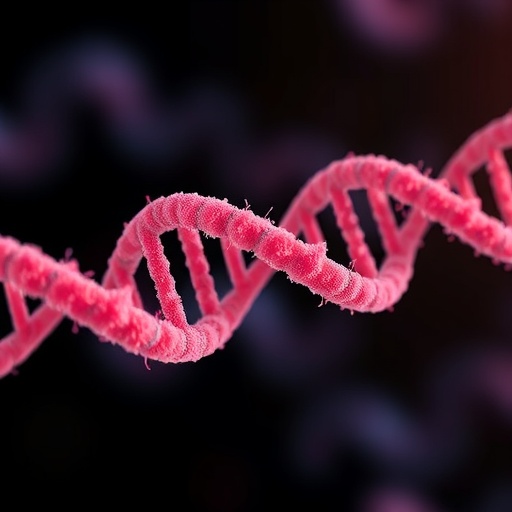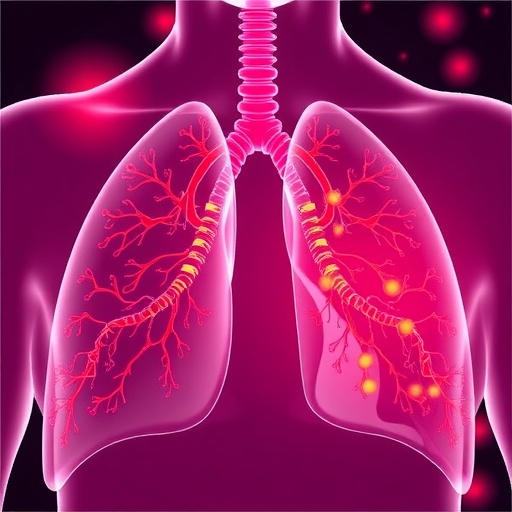
A groundbreaking review from Universiti Putra Malaysia and its regional partners is challenging the boundaries of cancer diagnosis and treatment by highlighting the transformative potential of extracellular RNA (exRNA) in oncology. These minuscule RNA fragments, many of which traverse the body encapsulated within exosomes, are capturing the imagination of researchers due to their dual utility: they are not only biomarkers signaling the presence and progression of malignancies but also vehicles capable of delivering precise therapeutic payloads directly to cancer cells. The study, published in the cutting-edge journal ExRNA, meticulously charts the progress and future opportunities for exRNA-based theranostics—technology that combines therapy and diagnostics into a unified clinical tool.
Traditional cancer diagnostics often rely heavily on tissue biopsies—a process that is invasive, painful, and suffering from sampling limitations that may miss tumor heterogeneity. Enter exRNA, accessible via liquid biopsies—non-invasive tests performed on body fluids such as blood or urine. Unlike conventional methods, exRNA profiling permits continuous monitoring of tumor dynamics in real-time, providing critical insights into mutation status, drug resistance development, and metastatic potential. These RNA molecules remain remarkably stable in circulation due to their enclosure within extracellular vesicles and bind to protein complexes, making them robust candidates for clinical diagnostics.
The molecular composition of exRNA is strikingly diverse. Among the most studied are microRNAs (miRNAs) and circular RNAs (circRNAs), which have demonstrated a sensitive ability to differentiate between healthy and cancerous states across various tumor types, including but not limited to lung, pancreatic, colorectal, and prostate cancers. These small RNAs act as molecular fingerprints emitted by cancerous cells; deciphering their signatures allows oncologists to pinpoint tumor type, aggressiveness, and even predict therapeutic responsiveness with increased accuracy.
.adsslot_zH4LWfeaiP{width:728px !important;height:90px !important;}
@media(max-width:1199px){ .adsslot_zH4LWfeaiP{width:468px !important;height:60px !important;}
}
@media(max-width:767px){ .adsslot_zH4LWfeaiP{width:320px !important;height:50px !important;}
}
ADVERTISEMENT
Beyond diagnostics, the therapeutic potential of exRNA-loaded exosomes is swiftly progressing from speculative to demonstrable. Bioengineers are now designing exosome-mimetic nanocarriers to deliver therapeutic RNA species capable of silencing oncogenes or reinstating tumor suppressor pathways within cancer cells. This targeted delivery system minimizes off-target effects seen with systemic chemotherapies and offers the tantalizing possibility of reversing established drug resistance. Preclinical models already illustrate compelling results, with RNA-loaded exosomes significantly suppressing tumor growth and enhancing the efficacy of existing drugs.
However, the journey from laboratory innovation to clinical application is fraught with challenges. One major bottleneck is the lack of standardized protocols for isolating and characterizing exRNAs and their vesicular carriers. Variability in sample collection, purification methods, and analytical techniques hampers reproducibility and cross-study comparisons. Moreover, manufacturing exosome-based therapeutics at scale under stringent regulatory standards remains unresolved, with concerns about batch consistency, purity, and potential immunogenicity.
Intricately linked to these challenges are the complexities of in vivo targeting. Ensuring that therapeutic exosomes reach their intended cancer cell populations without rapid clearance or unintended organ accumulation is a significant technical hurdle. Advances in molecular engineering, such as modifying exosomal surface proteins to enhance tissue tropism, are actively under investigation but require extensive validation. Parallel developments in artificial intelligence (AI) promise to accelerate these processes by enabling sophisticated pattern recognition and predictive modeling of exRNA profiles and treatment outcomes.
The implications of integrating AI with exRNA-based technologies extend far beyond mere diagnostics. AI algorithms can assimilate multifaceted molecular data sets to refine patient stratification, optimize individualized therapy regimens, and monitor treatment response with unprecedented precision. This convergence of molecular biology and computational power heralds a new era of precision oncology, where treatments are dynamically tailored not only to tumor genomics but to its evolving molecular environment.
This multidisciplinary synergy is reflected by the collaborative efforts of molecular biologists, bioengineers, clinicians, and data scientists driving this field forward. Their combined expertise is essential to unravel the complexity of exRNA biology—ranging from mechanisms of RNA sorting into exosomes to decoding intercellular communication pathways manipulated by tumors. Understanding these nuances is critical for harnessing exRNAs both as messengers dictating cancer progression and as vehicles delivering molecular interventions.
Importantly, as this research continues, ethical and regulatory considerations must keep pace. Robust clinical trials evaluating the safety and efficacy of exRNA therapeutics are imperative, along with frameworks to govern their clinical use and patient consent. Meanwhile, public and private investment in infrastructure and talent development will accelerate translation from bench to bedside, ensuring that these technologies do not remain confined to theoretical possibilities.
The reviewed literature posits a future where a simple blood test can simultaneously detect cancer presence, characterize its molecular profile, and administer targeted RNA therapies—all within a unified clinical workflow. This would signify a monumental leap in cancer care, mitigating the physical and psychological burdens patients currently endure and tailoring interventions with extraordinary specificity. While significant work remains, the horizon gleams bright with the promise of exRNA-based theranostics reshaping oncological landscapes.
Researchers emphasize that continued interdisciplinary collaboration and technological innovation will be catalysts in overcoming present-day barriers. By deepening our grasp of exRNA biology and enhancing bioengineering capabilities, exRNA-centered diagnostics and therapeutics may soon become integral components of routine cancer management. Such progress aligns with the overarching aspirations of precision medicine: to improve outcomes while minimizing harm.
This review is not merely a catalog of current achievements but a clarion call to the scientific community to recognize and unlock the vast potential of exRNAs. It underscores that the integration of molecular biology, nanotechnology, and artificial intelligence represents a transformative frontier in oncology. With concerted efforts, the vision of exRNA-guided, personalized cancer treatment is poised to transition from the realm of promise to that of clinical reality.
Subject of Research: Not applicable
Article Title: ExRNA as theranostic agents in cancer: current progress and future perspectives
News Publication Date: 25-Jul-2025
Web References: 10.55092/exrna20250008
References: Nik Abd Rahman, N.M.A., et al., ExRNA as theranostic agents in cancer: current progress and future perspectives. ExRNA, 2025. 7(2).
Image Credits: Nik Mohd Afizan Nik Abd Rahman, Che Nur Mazadillina Che Zahari, Mohd Azuraidi Osman, Noorjahan Banu Mohamed Alitheen/Universiti Putra Malaysia, Nur Akmarina Mohd Said/Universiti Malaya, Shazreen Shaharuddin/Universiti Pertahanan Nasional Malaysia, Putri Cahaya Situmorang/Universitas Sumatera Utara
Keywords: Cancer
Tags: advancements in cancer treatmentcancer biomarkers in oncologychallenges in cancer diagnosisexosomes and cancer therapyexRNA-based theranosticsextracellular RNA in cancerliquid biopsies for cancernon-invasive cancer diagnosticsprecision medicine in oncologysmall RNA fragmentstherapeutic payloads for cancer treatmenttumor monitoring using exRNA





